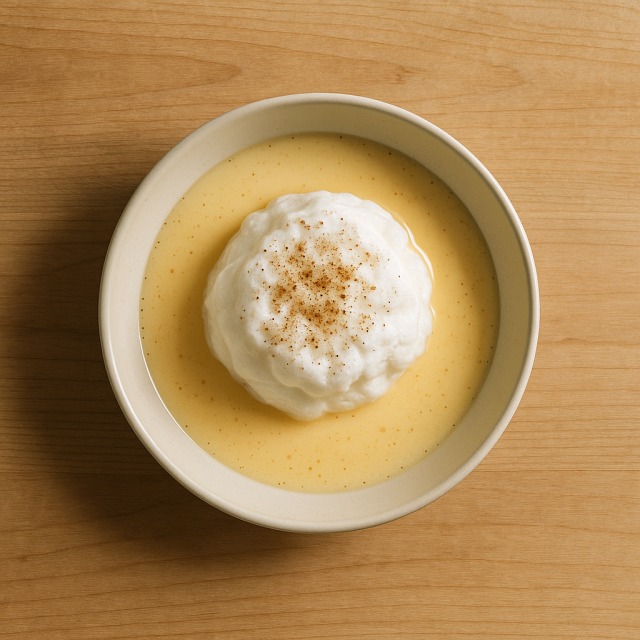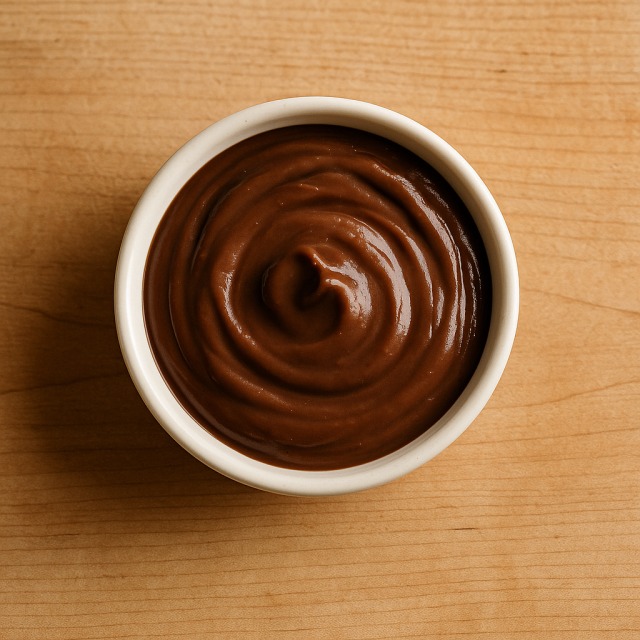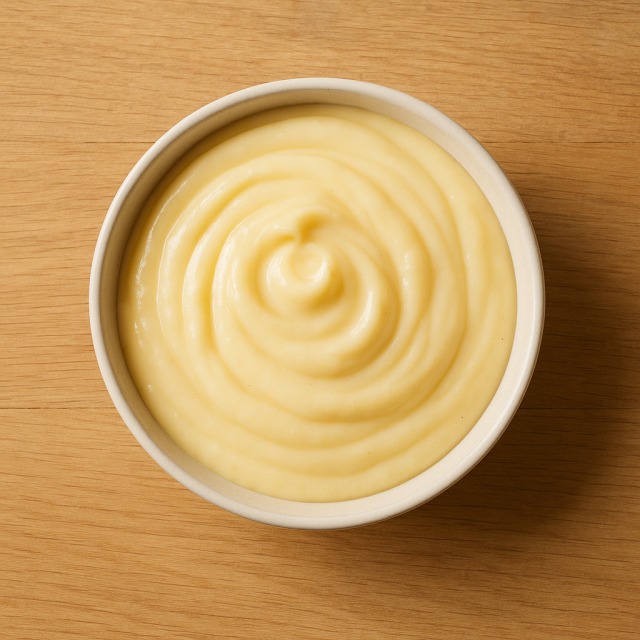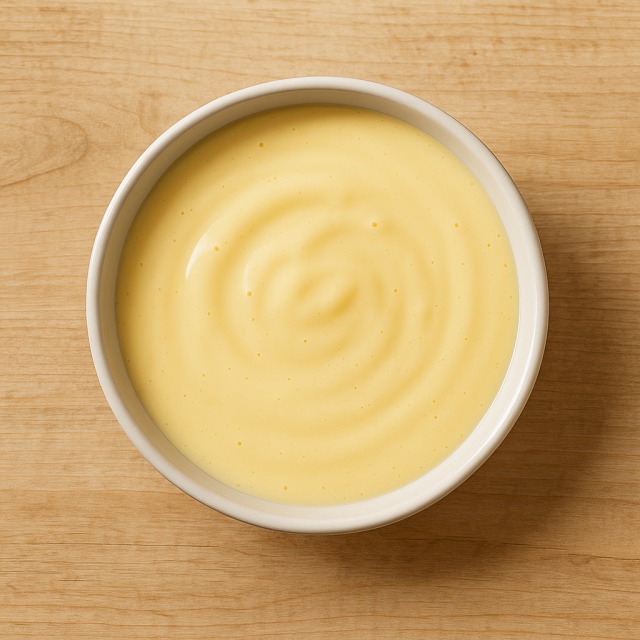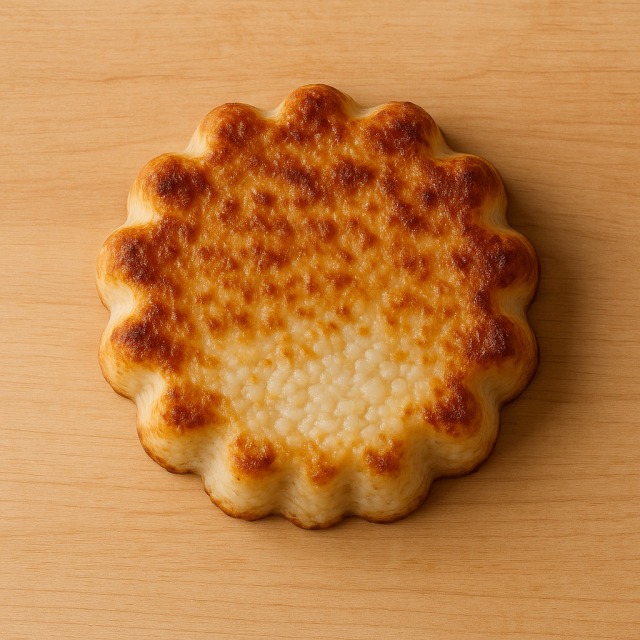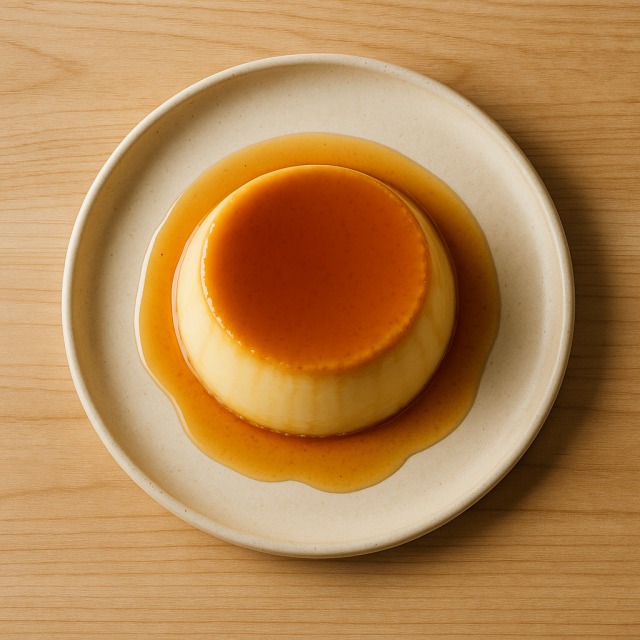Calorie Chart / Desserts / Rice pudding
How Many Calories Are in Rice pudding?
Calculation of the nutritional value & Recommended Dietary Intake of rice pudding
For g and a calorie requirement of kcal
| Calories 162 kcal | Proteins 3.6 g | Lipids 3.6 g | Carbohydrates 29 g |
| 8% | 5% | 5% | 11% |
Health benefits of rice pudding
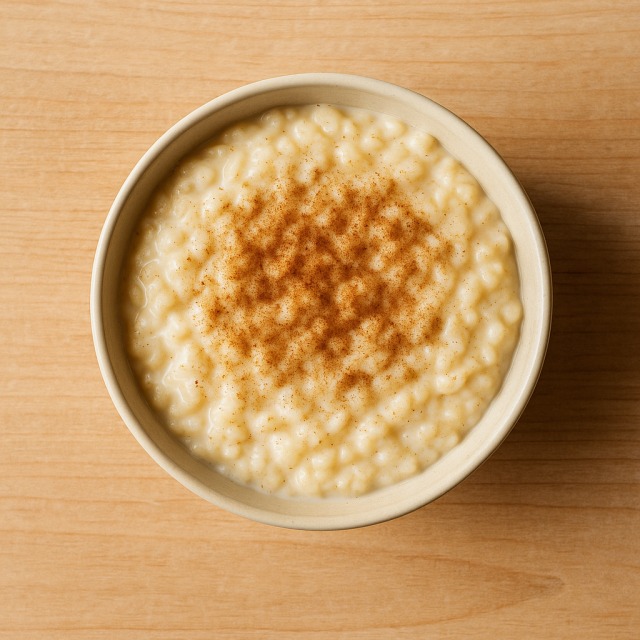
Rice pudding - 100g
Calories 135 kcal
Proteins 3 g
Lipids 3 g
Carbohydrates 24 g
Rice pudding is a moderate-calorie dessert: its calorie density is lower than that of flaky pastries but higher than that of plain fruit. These calories come mainly from the slow-release carbohydrates in rice, which help maintain energy levels over several hours.
Because the recipe is traditionally prepared with semi-skimmed milk or even whole milk, it supplies calcium, phosphorus, and vitamin B12 that support bone health and red-blood-cell formation without adding excessive calories if portions are reasonable. A small dose of proteins further tempers the calories' effect on blood-sugar spikes.
Rice pudding also delivers small amounts of iodine (when made with iodised salt) and selenium, two minerals useful for thyroid function. The presence of natural vanilla compounds provides supposed antioxidant benefits, although evidence remains limited—again, the impact is minor compared with the overall calorie profile.
First traced to Middle-Age Europe, the dish was prescribed by apothecaries as a gentle food for convalescents—proof that its comforting texture and balanced calorie load have been appreciated for centuries.
Tips for incorporating rice pudding into a balanced diet
If you enjoy rice pudding but watch your calories, serve a 100 g cup with a topping of fresh strawberry slices instead of sugary jam; the natural sweetness lets you keep total calories in check while adding vitamin C. Another light idea is to pair it with a warm compote of apple; the fibre slows the absorption of calories coming from the rice.
For a post-workout snack, sprinkle toasted almond slivers on top: the extra proteins help muscle recovery, and the synergy of calories from carbs and fats replenishes glycogen efficiently. When serving it as a dessert after a hearty main like beef curry with rice, keep the portion small so the total meal calories remain balanced.
Craving a festive version? Replace part of the sugar with a drizzle of honey and scent it with citrus zest; you will add flavour intensity without dramatically increasing calories. For an even leaner variant, cook the pudding with skimmed milk and a pinch of stevia—this can shave dozens of calories per portion while maintaining creaminess.
Frequently Asked Questions
- How many calories are in rice pudding?
- Rice pudding provides about 135 kcal per 100 g.
- Is rice pudding suitable for a weight-loss diet?
- Yes, if the portion is controlled; its moderate calorie load and satiating texture make it easier to satisfy a sweet craving without exceeding daily calorie targets.
- Does rice pudding contain gluten?
- No, rice is naturally gluten-free, so all its calories are safe for people with coeliac disease—just check that flavourings or thickeners added do not introduce gluten.
- What is the protein content of rice pudding?
- The dessert offers a modest amount of milk-derived proteins, which slightly increase the thermic effect of the calories ingested and support satiety.
- How can I lower the calories in homemade rice pudding?
- Use skimmed milk, reduce added sugar by half, and stir in a mashed ripe banana for sweetness; these tweaks can cut roughly 20-30% of calories per serving.
Similar foods
Information provided by Calorie Menu may contain inaccuracies or errors. It cannot, under any circumstances, substitute medical advice or medication.
